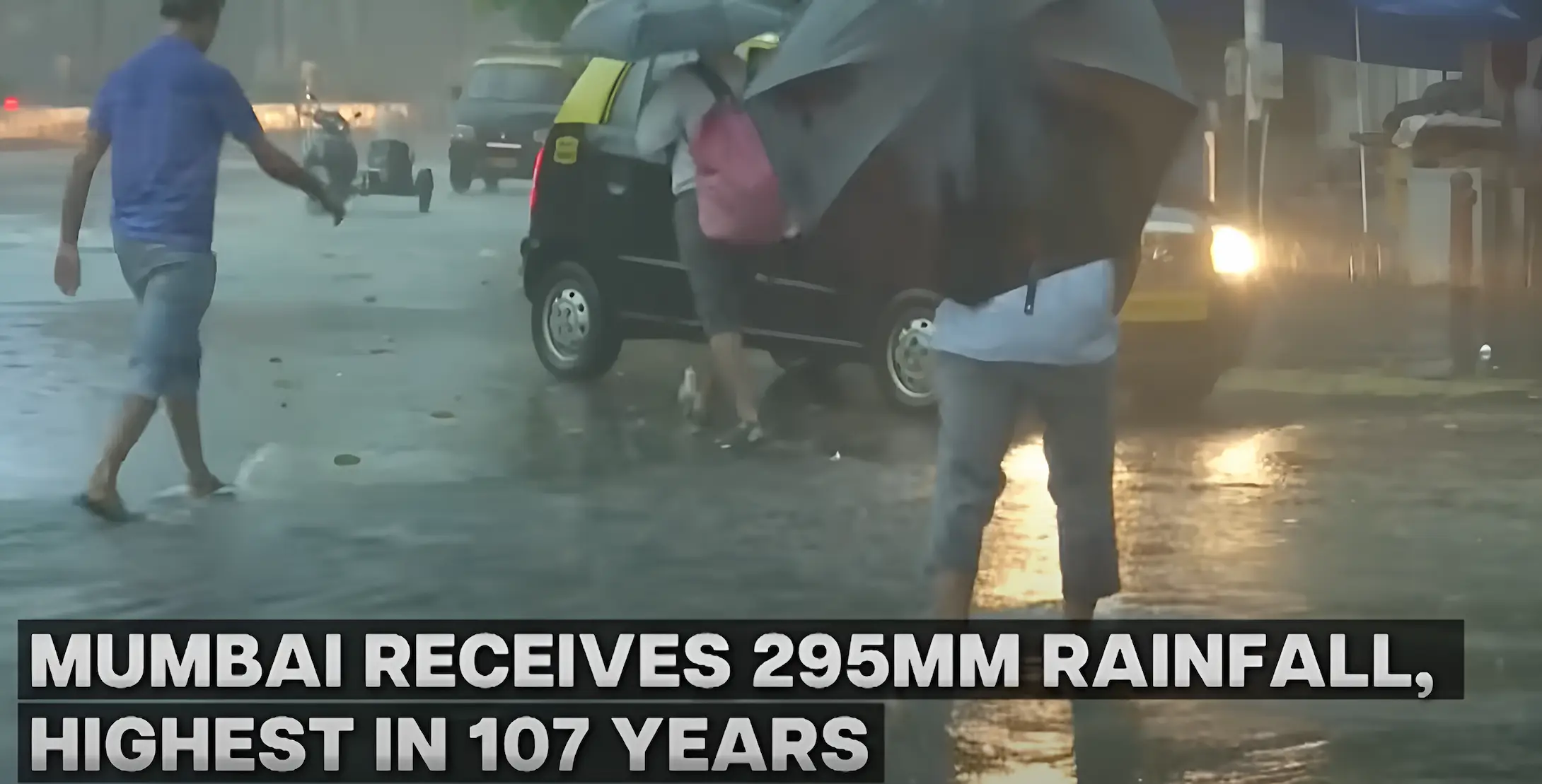
Mumbai faces severe waterlogging yet again, disrupting daily life and exposing civic failures. Why has this issue persisted for decades? (image - videograb Firstpost)
Mumbai, India’s financial capital, is once again grappling with severe waterlogging following intense monsoon showers. Streets are submerged, transportation is crippled, and citizens are left frustrated. Despite decades of promises and urban development projects, the city’s drainage system remains inadequate. Why does Mumbai continue to suffer from this recurring crisis?
The Scale of the Problem
On May 26, 2025, Mumbai witnessed record-breaking rainfall, with areas like Nariman Point receiving 252 mm of rain, followed by Byculla at 213 mm. The heavy downpour led to waterlogging in key locations, including Dadar, Parel, Wadala, and Churchgate. Suburban train services were disrupted, and road traffic slowed to a crawl.
Civic Failures and Infrastructure Gaps
The Brihanmumbai Municipal Corporation (BMC) had set up 10 mini pumping stations to tackle waterlogging, yet four of them failed to operate effectively, leading to severe flooding. The operators at Hindmata, Gandhi Market, Yellow Gate, and Chunabhatti were penalized ₹10 lakh each for negligence.
Despite these measures, Mumbai’s drainage system remains outdated. The city’s stormwater drains, designed over a century ago, are incapable of handling the increasing rainfall intensity. Encroachments, poor maintenance, and clogged gutters further exacerbate the problem.
The Impact on Daily Life
Mumbai’s waterlogging crisis disrupts nearly every aspect of daily life, affecting millions of residents and businesses. The consequences are far-reaching, impacting transportation, health, and the economy.
Transportation Disruptions
The city’s lifeline, the suburban railway network, was severely affected, with trains running 30 to 45 minutes behind schedule due to waterlogged tracks at Masjid, Kurla, and Sion stations. Several flights at Chhatrapati Shivaji Maharaj International Airport were delayed as heavy rainfall reduced visibility and caused operational challenges.
Road traffic was equally chaotic, with major junctions like King’s Circle, Hindmata, and Parel TT submerged, forcing commuters to wade through knee-deep water. The Acharya Atre Chowk Metro Station, inaugurated just two weeks ago, was flooded, leading to temporary suspension of services.
Health Hazards
Stagnant water creates a breeding ground for mosquitoes, increasing the risk of dengue and malaria outbreaks. Hospitals reported a 20% rise in cases of waterborne diseases like cholera and leptospirosis. Additionally, the flooding led to sewage overflow, contaminating drinking water supplies in several areas, raising concerns about public health.
Economic Losses
Businesses suffered significantly, with retail stores and offices in Lower Parel, Bandra, and Andheri experiencing reduced footfall due to inaccessible roads. Delivery services were disrupted, causing delays in essential supplies. The real estate market also took a hit, as prospective homebuyers avoided site visits in flood-prone areas.
Expert Opinions and Public Outrage
The recurring waterlogging issue has sparked widespread criticism from experts and citizens alike.
Urban Planning Experts Weigh In
Urban planners argue that Mumbai’s drainage system is outdated and inadequate for handling extreme rainfall events. Dr. Ramesh Patil, a civil engineer specializing in urban infrastructure, stated, “Mumbai’s stormwater drains were designed over a century ago and cannot cope with today’s rainfall intensity. The city needs a complete overhaul of its drainage system.”
Climate scientists have also pointed out that changing rainfall patterns due to global warming are exacerbating the problem. M. Rajeevan Nair, a climate expert, explained, “Mumbai is experiencing more intense rainfall in shorter durations, overwhelming the drainage system. The city must invest in better flood management strategies.”
Public Frustration and Political Reactions
Citizens took to social media to express their frustration, with hashtags like #MumbaiFloods and #BMCFail trending on X (formerly Twitter). Filmmaker Vivek Agnihotri criticized the city’s infrastructure, calling it a “scam wrapped in a sham”.
Political leaders also weighed in. Maharashtra Deputy CM Eknath Shinde acknowledged the severity of the situation, stating, “Such heavy rainfall has not occurred in decades. We have deployed 66 pumps and sensors across the city to manage waterlogging.” However, opposition leaders like Aditya Thackeray slammed the government’s preparedness, arguing that pre-monsoon drain cleaning was neglected.
Conclusion
Mumbai’s monsoon-induced waterlogging is not just a seasonal inconvenience—it’s a systemic failure. Despite repeated assurances from civic authorities, the city continues to suffer from poor drainage infrastructure, encroachments, and inadequate flood management.
The BMC’s penalty of ₹10 lakh on four mini pumping station operators highlights the lack of accountability in monsoon preparedness. However, fines alone will not solve the problem. Mumbai needs long-term solutions, including:
- Upgraded drainage systems with modern stormwater management.
- Strict encroachment policies to prevent illegal constructions blocking drainage paths.
- Regular maintenance of gutters and sewers.
- Public awareness campaigns to encourage responsible waste disposal.
Until authorities take decisive action, Mumbai will continue to suffer from monsoon misery year after year. The question remains: Will the city ever be free from its flooding woes?